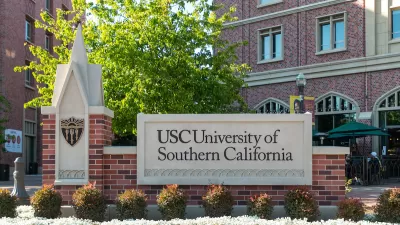The California Supreme Court ruled against the university in a battle over a proposed enrollment cap, forcing the school to reject thousands of potential new students.

After a legal battle over a proposed hike in enrollment, the University of California, Berkeley will be forced to cut enrollment by roughly 3,000 students in the coming fall. Nanette Asimov and Bob Egelko report on the saga, which began when a neighborhood group sued on the grounds that the university did not conduct the appropriate Environmental Impact Review (EIR) for its proposed expansion.
In August, Superior Court Judge Brad Seligman ordered the campus to cap enrollment at 42,237 — the fall 2020 number — and to halt construction of its Upper Hearst project at 2698 Hearst Ave.: two buildings intended to house professors and add classrooms for the Goldman School of Public Policy. Neighbors had argued that the university failed to properly plan for the increased noise, traffic and other quality-of-life problems the project would bring.
Save Berkeley's Neighborhoods, the group that brought the lawsuit, says it does not want to stop the university's projects altogether, but rather to ensure the university conducts an adequate analysis of potential impacts. "On a 4-2 vote, in a one-sentence order without further comment, the court refused to lift the enrollment freeze ordered by an Alameda County judge and denied review of an appellate ruling requiring the university to conduct further environmental review of an off-campus construction project while it limits incoming enrollment."
The article details the lawsuit and subsequent appeals, which culminated on March 3 with the California Supreme Court decision.
A proposed state bill making its way through the California legislature would exempt public universities from CEQA requirements, which could prevent future battles similar to this one.
FULL STORY: UC Berkeley must withhold thousands of acceptance letters after state Supreme Court ruling

Study: Maui’s Plan to Convert Vacation Rentals to Long-Term Housing Could Cause Nearly $1 Billion Economic Loss
The plan would reduce visitor accommodation by 25,% resulting in 1,900 jobs lost.

North Texas Transit Leaders Tout Benefits of TOD for Growing Region
At a summit focused on transit-oriented development, policymakers discussed how North Texas’ expanded light rail system can serve as a tool for economic growth.

Why Should We Subsidize Public Transportation?
Many public transit agencies face financial stress due to rising costs, declining fare revenue, and declining subsidies. Transit advocates must provide a strong business case for increasing public transit funding.

How to Make US Trains Faster
Changes to boarding platforms and a switch to electric trains could improve U.S. passenger rail service without the added cost of high-speed rail.

Columbia’s Revitalized ‘Loop’ Is a Hub for Local Entrepreneurs
A focus on small businesses is helping a commercial corridor in Columbia, Missouri thrive.

Invasive Insect Threatens Minnesota’s Ash Forests
The Emerald Ash Borer is a rapidly spreading invasive pest threatening Minnesota’s ash trees, and homeowners are encouraged to plant diverse replacement species, avoid moving ash firewood, and monitor for signs of infestation.
Urban Design for Planners 1: Software Tools
This six-course series explores essential urban design concepts using open source software and equips planners with the tools they need to participate fully in the urban design process.
Planning for Universal Design
Learn the tools for implementing Universal Design in planning regulations.
City of Santa Clarita
Ascent Environmental
Institute for Housing and Urban Development Studies (IHS)
City of Grandview
Harvard GSD Executive Education
Toledo-Lucas County Plan Commissions
Salt Lake City
NYU Wagner Graduate School of Public Service





























